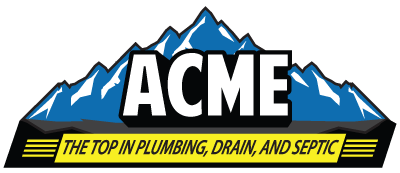3 WAYS THAT SMART TECHNOLOGY IS CHANGING PLUMBING
Recent years have seen rapid advancements in the world of technology, with smart devices becoming an ever-present part of most people’s lives. Initially, such developments mainly affected computers and phones. Yet manufacturers now find ways to integrate smart technology into a wide variety of products and industries.
In coming years, the world of plumbing will increasingly take part in this technological revolution. Yet many homeowners still don’t understand just what smart technology can do for their home’s plumbing. This article takes a closer look at three exciting ways technology can improve your plumbing system.
1. Water Monitoring
As smart technology becomes ever smaller and more affordable, it can more easily integrate with parts of your home in order to increase efficiency and prevent common problems. Internet-ready sensors can provide you with a wealth of data about your plumbing system.
In fact, homeowners can now monitor water usage on a fixture-by-fixture basis through the integration of vibration sensors. These sensors easily attach to your pre-existing network of pipes, analyzing when and where vibrations occur. A computer then processes this data using algorithms that can quickly identify any excessive or abnormal water usage.
On one hand, this information gives you a better picture of how and where you consume the most water, allowing you to make tweaks to your habits in order to increase overall efficiency. On the other hand, vibration sensors provide a great way to identify leaks and clogs before they lead to full-scale plumbing disasters.
Such vibration sensors already exist on the market today. In coming years, consumers will likely also have the option to install sensors that can monitor other factors including pH, chlorination, and hardness levels.
2. Healthier Lawns
Smart technology has quickly gained traction in the world of lawn hydration, giving homeowners a way to keep their grass as healthy as possible with the minimal amount of water use. Traditional sprinkler systems, by contrast, simply pump out a certain amount of water at regular intervals, often leaving lawns either over- or under-watered.
As a result, traditional sprinkler technology doesn’t always maximize the health of your lawn. For example, timer-based sprinkler systems also end up wasting a lot of water, turning on even if it happens to be raining at that very moment.
Smart sprinkler systems optimize both lawn health and water efficiency. To begin with, the smart controller receives real-time weather information from your home’s internet connection. This information allows the system to determine when — and whether — to turn on its sprinklers.
For instance, the system will automatically respond to rain in the forecast by delaying watering. If the rainfall doesn’t exactly match the forecasted amount, your system will compensate with an appropriate amount of additional water.
Smart sprinklers can provide even more accurate results through the use of in-ground sensors. Such sensors provide data regarding soil moisture levels, allowing you to fully optimize healthy growth conditions.
3. Hot Water Optimization
Smart technology can also improve efficiency when it comes to water-related appliances such as hot water heaters. A smart hot water heater can quickly gather a body of information about when your household uses the most hot water — and when it uses little to none. This data allows the appliance to custom-tailor its energy usage to best meet your needs.
For instance, if your water heater determines that no hot water gets consumed between the hours of midnight and 6 a.m., it can automatically decrease its energy usage at such times. Even better, a smart water heater can ensure that you’ll always have piping hot water for your 7 a.m. shower.
Smart technology and the internet will increasingly impact residential plumbing in beneficial ways. For more information about how you can optimize your home’s plumbing system, please call us at (317) 423-7289.
